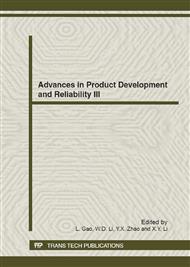p.61
p.67
p.72
p.77
p.82
p.88
p.94
p.99
p.105
Research on Profit Model of Diesel Engine Products-Services System
Abstract:
While PSS is fundamental for the development of solution oriented partnerships, the stakeholders’ distribution of profit is not defined an operational paradigm yet. In this article, we provide a brief overview of the diesel engine in the area of Product Service Systems. Firstly, we establish the model of Diesel Engine PSS, when we analysis the product features of diesel engine and the features of PSS for diesel engine. The application of PSS in diesel engine area may be different from other manufacturing, but the intrinsic complexity of PSS, which include Convenient, science and the economy, can be proved for the stakeholders. So then we summarize the stakeholders of PSS, and understand the relationship of stakeholders’ profit structure. Finally, we design the profit model of diesel engine PSS. The main content is that how to get the quantization of the stakeholders’ profit and the balance the profit model of diesel engine PSS which can decide to the trade of diesel engine products-services smoothly.
Info:
Periodical:
Pages:
82-87
Citation:
Online since:
June 2012
Authors:
Keywords:
Price:
Сopyright:
© 2012 Trans Tech Publications Ltd. All Rights Reserved
Share:
Citation:


